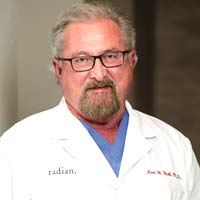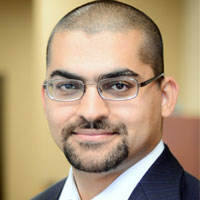Hair Transplants - The End of Baldness
With cosmetic surgical procedures
becoming increasingly cheap and accessible, having the appearance you've always
wanted is no longer the vaunt of the young population. And since male pattern
baldness is at the top of the list of things men would like to change about
their looks, it's no wonder that the hair transplant is becoming one of the
most popular solution to hair loss which appear to be mostly a hereditary
problem.
Hair Transplant
A hair
transplant is a cosmetic surgical procedure that attempts to permanently
re-establish healthy growing hair in areas that have become bald. It is
typically a procedure that is used to counter male pattern baldness, but can
also be used in the event of hair loss due to scarring, for example on the beard
area, or even the eyebrows, eyelashes, and pubic hair and to fill in the
hairless scars caused by accidents, surgery or burns.
Method
Hair follicles are harvested from a donor area that has
healthy, bald-resistance hair, and moved to the recipient area, where they are
re-established in as natural a growing pattern as possible. The donor area is
usually the back part of the head, where a strip of skin and hair can be
removed, and the scar can be hidden in the natural creases of the scalp, and by
re-growth of surrounding hair.
The strip is then cut into small tiny pieces, and re-grafted
onto the recipient area. In an even more advanced procedure called follicular
unit transplantation, individual follicle units are removed from the donor area
rather than a strip, and the follicles, complete with as much of their glands
and blood supply as possible, are individually grafted onto the bald area.
Either procedure ( strip harvesting or follicular unit grafting)
is carried out under local anesthetic, and for male pattern baldness, an
average of 2500 hair follicles are re-established in the recipient area per
session. Depending on which procedure you opt for, the healing time varies
between 1-2 weeks.
Procedure
There are two main procedures
for transplanting; grafts harvesting or graft transplanting. Whichever one, the
procedure is done under local anesthesia tumescent technique.
For several days prior to surgery the patience refrains from
using any medicines which might result in intra-operative bleeding and
resultant poor "take" of the grafts. Alcohol and smoking can
contribute to poor graft survival. Post operative antibiotics are commonly
prescribed to prevent wound or graft infections.
It involves about seven to eight hours. At the end a
protective dressing is done which is removed after two days.
The recovery time is immediate and the pain negligible. It
is pertinent to note that hair transplant operations are performed on an out
patience basis
During the first six weeks, shafts of virtually all of the
transplanted hairs will fall out leaving their bulbs behind. After two to three
months new hair will begin to grow from the moved follicles. The patient's hair
will grow normally, and continue to thicken through the next six to nine
months.
The patience is advised to wash his head after six days and
is also advised to wear a soft cap to avoid direct exposure to sunlight till
the hair growth starts.
Hairfear - 11-23-2015
Frequently asked questions about hair transplant procedures
How much does a hair transplant cost?
Hair transplants can vary in price based off of the area in the world that you are interested in getting a hair transplant as well as the size of the area where you may need a hair transplant. Experienced doctors in the United States will often charge some of the highest prices for a hair transplant worldwide and this is why so many travelers make the move to other parts the world like Turkey, India, Thailand, Mexico...etc for their hair transplants.
Will a hair transplant hurt?
Although hair transplants may look like a particularly
unpleasant or painful experience is actually very little discomfort involved
with the surgery itself. Hair transplants are always done under an anesthetic so there's absolutely zero pain during the treatment itself. Many people actually relate the process as being very similar to going to the dentist for filling or root canal. Mild pain can persist over the course of postop treatment but he generally just resumes for a few days.
Who can deliver the best surgery?
It's usually best to consider working with surgeons who have and IAHRS certification or international alliance of hair restoration surgeons recognition. IAHRS can often deliver recommendations for the best surgeons in each particular area.
Is this scarring noticeable?
Any type of hair transplant will require the use of incisions throughout the scalp. There can also sometimes be a small scar from the donor area towards the back of the scalp. Asking to look at photos of the surgeon's previous work will help you to see roughly how bad the scarring could be. In most cases an experienced professional can limit the look of scarring and noticeable marks from the surgery.
How long does it take for the hair to grow?
In most cases hair growth will start within eight months and you can start to see a full effect from the hair transplant after a full year. The initial signs of growth can usually start between 3 to 4 months after the surgery.
Are the results permanent?
The hair follicles that are transplanted are generally the ones which are genetically resistant against the symptoms of baldness. As long as you receive hair loss treatment later in your life after the symptoms of balding have started to subside, you can have a better chance at permanent results.
While everyone know you've had surgery?
If you want to limit the chance that people may find out about your surgery it's important to give at least three weeks of healing as the surgical area will be affected and red just after surgery. After around a month of healing it can look far less noticeable. You could consider wearing a hat while time passes or opting for some extra time off if possible.
How long should I rest after surgery?
It's recommended to rest for at least a few days after surgery so that your body can recover. Trenton to over exert yourself and limit sexual activity, running in the gym for around 10 days after surgery.
Is it possible to lose more hair as a result of surgery?
There is always a chance of shock loss which happens when the hair is weak and miniaturizing after the surgery. As long as the surgeon is choosing the correct hair follicles and performing the surgery well it's possible to minimize the chance of this happening however.
Will I need another hair transplant?
The need for another transplant really depends on the individual. With a solid foundation surgery and working to potentially bolster results with drug therapy, you can improve the stability of the hair that was transplanted as well as prevent further loss. Getting a hair transplant early
on in your 20s or early on in life could lead to needing long-term transplants as hair loss can be progressive.







